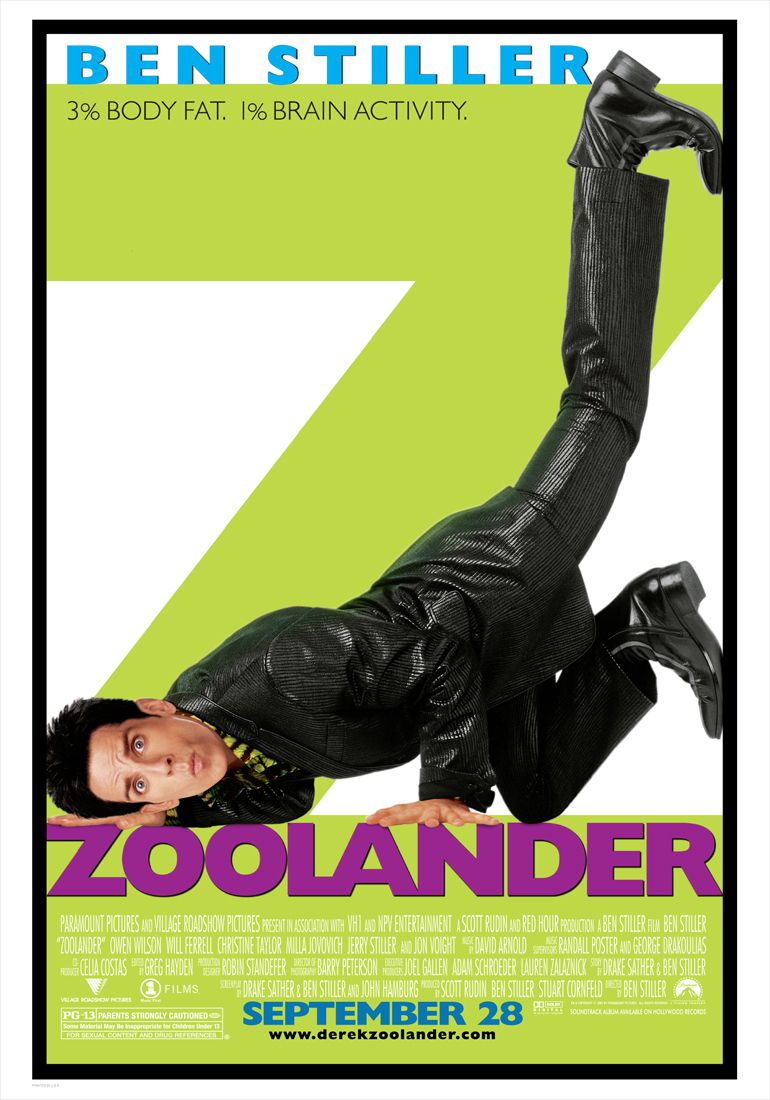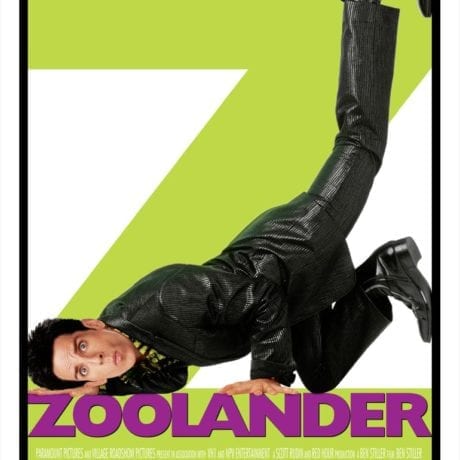 I first watched Zoolander, snuggled in bed with a small portable DVD player, when I was living in South Korea and working as a model in my final summer of school. It was a pretty miserable time. There were eight of us in a small apartment, myself, my friend, two fourteen-year-old girls from Slovakia and four Brazilians. Two of the Brazilians were men, and they strutted around the apartment in tiny, tight, Disney-themed pants after their morning showers, showing off triangular Adonis torsos and telling us how good looking they were.
I first watched Zoolander, snuggled in bed with a small portable DVD player, when I was living in South Korea and working as a model in my final summer of school. It was a pretty miserable time. There were eight of us in a small apartment, myself, my friend, two fourteen-year-old girls from Slovakia and four Brazilians. Two of the Brazilians were men, and they strutted around the apartment in tiny, tight, Disney-themed pants after their morning showers, showing off triangular Adonis torsos and telling us how good looking they were.
As a young model, you are often riddled with doubts about your place in the world. Are you letting your actual talents slide by, as you fall further and further away from education? Will you ever be seen or judged beyond your walk and waist size? Can you still remember who you wanted to be when you grew up?
The one thing left for female models to hold onto is the fact that male models are quite clearly even more lost. Often scouted straight out of school and bestowed with a newly enlarged dose of self-confidence (in their appearance and pulling abilities at least), they seem to care little for life outside their bubble. Barely adults yet dressed in men’s sharp suits for glossy magazines, they shag, fart and drink their way through the fashion industry, falling asleep on jobs, ogling the girls getting changed, pissing on the floor backstage and getting away with all because, well, they’re sexy as hell.
In sashays Derek Zoolander, Ben Stiller’s definitely-too-old-to-be-a-model supermodel, who is stupidity personified—and who playfully falls into every male model cliché there is. He has one face which he pulls out for every single photoshoot he does (including his twelve-photo calendar); he assumes that everyone he meets fancies him (why wouldn’t they, he’s really really ridiculously good looking); he’s so stupid that he can’t turn left on a runway (“I’m not an ambiturner!”).
In one famous scene (which without doubt characterizes this film as a petrol station classic), Derek’s equally dim male model friends have a playfight with petrol hoses in a New York gas station, before one of them strikes up a cigarette and burns them all to the ground. Sounds horrific, it’s actually rollicking good fun—the burned alive victims’ utter stupidity makes this scene feel cartoonish rather than terrifying; the characters here are seen, as models often are, as slightly sub human (not “real” bodies equals not “real” feelings). The triumph by the end of the film is that the audience is sold on Derek’s plight—ridiculous as it is—despite his presentation as an empty void.
The 2001 movie also has a multitude of magnificent cameos, including the fashion god himself David Bowie (who referees an out-of-this-world walk-off), Sting, Natalie Portman, Cuba Gooding Jr and, now rather less funny, Donald Trump. It revels in absurdity, with high-shine outfits that most designers wouldn’t be seen dead creating, fashion super-villains and mental plot twists. Get yourself an orange mocha frappuccino, sit back, and let the lunacy wash over you.






